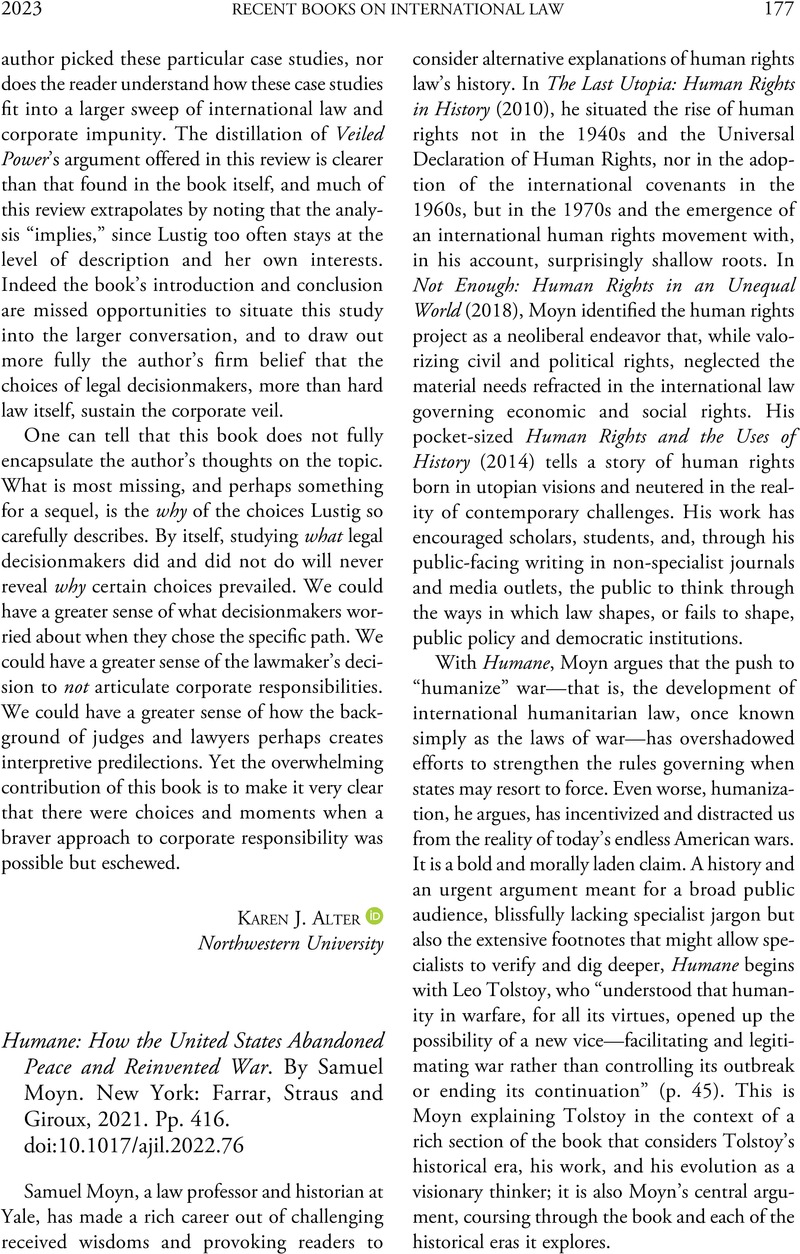No CrossRef data available.
Published online by Cambridge University Press: 25 January 2023

1 This reviewer was an attorney-adviser with the State Department at that time but not involved in this debate. In an oral history, Madeline Albright, reflecting on the time when she was U.S. secretary of state, noted: “There was the whole other question, which was whether this was all legal, since it hadn't been done through the UN. If we had waited around for the UN, the Kosovars would all be dead by now.” William J. Clinton Presidential History Project, Interview with Madeleine K. Albright, Aug. 30, 2006, at 62 (2014). See also Michael J. Matheson, Council Unbound: The Growth of UN Decision Making on Conflict and Postconflict Issues After the Cold War 139 (2006); Wood, Michael, International Law and the Use of Force: What Happens in Practice?, 53 Indian J. Int'l L. 345 (2013)Google Scholar.
2 See O'Connell, Mary Ellen, The UN, NATO, and International Law After Kosovo, 22 Hum. Rts. Q. 57, 80–82 (2000)CrossRefGoogle Scholar.
3 John Fabian Witt, Oh, the Humanity, Just Security (Sept. 8, 2021), at https://www.justsecurity.org/78135/oh-the-humanity.